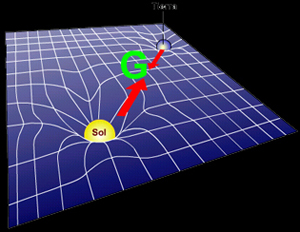
Unit 5 Assignments

Gravity
 |
Unit 5 Assignments |
 Gravity |
| Gravity in Space |
|
Bundle 5 How can objects
interact at a distance? |
|
MS-PS2-4
Evidence Statement MS-PS2-4. Construct and present arguments using evidence to support the claim that gravitational interactions are attractive and depend on the masses of interacting objects. Packet [Clarification Statement: Examples of evidence for arguments could include data generated from simulations or digital tools; and charts displaying mass, strength of interaction, distance from the Sun, and orbital periods of objects within the solar system.] [Assessment Boundary: Assessment does not include Newton’s Law of Gravitation or Kepler’s Laws.] |
|
MS-ESS1-2
Evidence Statement Develop and use a model to describe the role of gravity in the motions within galaxies and the solar system. Packet [Clarification Statement: Emphasis for the model is on gravity as the force that holds together the solar system and Milky Way galaxy and controls orbital motions within them. Examples of models can be physical (such as the analogy of distance along a football field or computer visualizations of elliptical orbits) or conceptual (such as mathematical proportions relative to the size of familiar objects such as students' school or state).] [Assessment Boundary: Assessment does not include Kepler’s Laws of orbital motion or the apparent retrograde motion of the planets as viewed from Earth.] |
|
MS-ESS1-3
Evidence Statement Analyze and interpret data to determine scale properties of objects in the solar system. PowerPoint [Clarification Statement: Emphasis is on the analysis of data from Earth-based instruments, space-based telescopes, and spacecraft to determine similarities and differences among solar system objects. Examples of scale properties include the sizes of an object’s layers (such as crust and atmosphere), surface features (such as volcanoes), and orbital radius. Examples of data include statistical information, drawings and photographs, and models.] [Assessment Boundary: Assessment does not include recalling facts about properties of the planets and other solar system bodies.] |
| Additionally, these ideas about forces that act at a distance can be connected to the concept that gravitational forces are always attractive; there is a gravitational force between any two masses, but it is very small except when one or both of the objects have large mass—e.g., Earth and the sun (PS2.B as in MS-PS2-4). Then, gravitational forces connect to the concepts that the solar system consists of the sun and a collection of objects, including planets, their moons, and asteroids that are held in orbit around the sun by its gravitational pull on them (ESS1.B as in MS-ESS1-3 and MS-ESS1-2) and this model of the solar system can explain eclipses of the sun and the moon. Earth’s spin axis is fixed in direction over the short-term but tilted relative to its orbit around the sun. The seasons are a result of that tilt and are caused by the differential intensity of sunlight on different areas of Earth across the year (ESS1.B as in MS-ESS1-1). |
|
Take every day before sleeping! Vocabulary Review Activities BrainPop Animations and Practice Quizes * 
|
Vocabulary - Glossary Gravity & Motion: Chapter 1 Section 2: Pages 16-19: The Solar System Chapter 2 Pages 48-91: Star Systems, GalaxiesChapter 3 Section 4 Pages 117-120: Universe & Formation of Solar System Chapter 3 Section 5 Pages 121-124: Dwarf Planets Artcle & Reading Questions - Espanol Science Skills Handbook Appendix: Pages 202-214: Process Skills Packet |
| Labs & Videos |
| Engage Discrepant Event |
Explore Research |
Explain Write-Up |
Elaborate New situations/applications |
Evaluate project to share |
| Reading & Math Work |
|
|
| Projects by Learning Style and Media Type |
 Sensing-Thinking
(Mastery) Sensing-Thinking
(Mastery)Facts
|
 Sensing-Feeling
(Interpersonal) Sensing-Feeling
(Interpersonal)A time when you...
|
 Intuitive-Thinking
(Understanding) Intuitive-Thinking
(Understanding)Playing with facts
|
 Intuitive-Feeling
(Self-Expressive) Intuitive-Feeling
(Self-Expressive)Creating new possibiliteis
|
|
|
|
 Live
Presentation Project Live
Presentation Project
|
| Essential Vocabulary & Concepts |
| Picture | CCore Knowledge or
Concept |
 |
The law of universal gravitation states that the
force of gravity acts between all objects (matter) in the universe
(everything, everywhere). |
 |
Gravity
is the force that pulls objects towards more massive things (like Earth). Gravity's strength varies by
|

|
Sun: is the heart of the solar system and is 99.8% of its mass. Its burning atmosphere is in the millions of degrees Celsius. |
| Scientist |
|
| |
Technology |